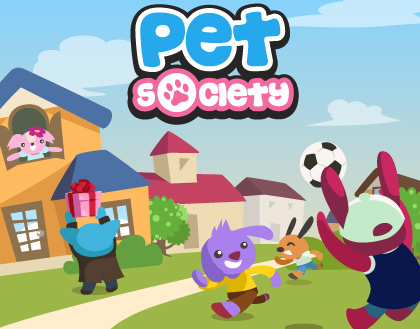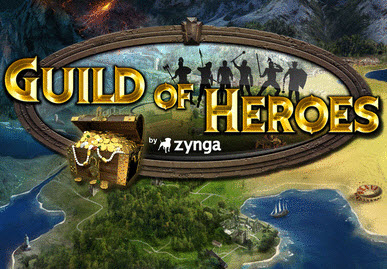 Our GamesBeat 2009 games conference on March 24 will explore the frontiers of gaming such as emerging gaming platforms. Facebook certainly qualifies as one of the hottest game platforms, now that it has 5,000 games. When the social network opened its platform up in 2007, it had no idea that games were going to become a big part of it. But now it’s up to Gareth Davis, the program manager for games in Facebook’s platform marketing division, to keep it going. The top gaming dude at the fast-growing Palo Alto, Calif.-based social network will be one of our panelists at GamesBeat, and I talked to him recently about what’s on his mind.
Our GamesBeat 2009 games conference on March 24 will explore the frontiers of gaming such as emerging gaming platforms. Facebook certainly qualifies as one of the hottest game platforms, now that it has 5,000 games. When the social network opened its platform up in 2007, it had no idea that games were going to become a big part of it. But now it’s up to Gareth Davis, the program manager for games in Facebook’s platform marketing division, to keep it going. The top gaming dude at the fast-growing Palo Alto, Calif.-based social network will be one of our panelists at GamesBeat, and I talked to him recently about what’s on his mind.
 VB: How long have you been at Facebook and what’s your job?
VB: How long have you been at Facebook and what’s your job?
GD: I joined Facebook in the summer of 2008. I’m on the platform marketing team and we’re responsible for helping the development community thrive. Gaming is just one of the things I handle but it tends to dominate my time. I have a background in games as a game developer, designer and producer. I left the industry in 2000 to do some other things. I joined Facebook to get back into the Internet side of the business. I had been tracking games and found it was a big opportunity once I got here. I’m the only person focused on games. There are six of us focused on platform marketing and there are 600,000 developers. We do our best to help the ecosystem. There are many people here who are passionate about games, but I’m the first one who has worked in the games business. I have expertise and contacts there.
 VB: What is the scale of games on Facebook?
VB: What is the scale of games on Facebook?
GD: Games is by far the biggest application on Facebook. We have more than 5,000 games and hundreds of thousands of developers. I track the top 10 closely. We see significant growth in the top 10. The top game now is Zynga’s Texas Hold ‘Em. It has eight million monthly active players. The tenth game is [Bowling Buddies with 3.8 million.] If you look at all of the top 10, you have 50 million players. There is overlap there, of course. But there is a lot of game playing going on. It’s growing about 10 percent a month and that’s awesome. Overall, Facebook has 150 million active members now. Look at the Nintendo Wii, which is under 50 million units. Xbox Live has 10 million paying members. World of Warcraft has 12 million. So if you look at a platform with a scale of 150 million members, it’s huge. That makes game developers very interested. The other piece of the puzzle is distribution. There is no cost to develop on Facebook or distribute. You keep 100 percent of the revenue. Electronic Arts did an incredible job of owning distribution for a very long time. The exposure to an audience was very restricted. You had to have a great budget, do a lot of marketing, and get retail space. The internet has dis-intermediated that. Look at HitGrab, a couple of guys who did the game Mouse Hunt. They are one of the companies we funded. They have 300,000 monthly active users. It’s a cool product that doesn’t fit in a traditional classification. It has found an audience.
VB: What is the main revenue source for Facebook games?
GD: There is no one revenue model for a game. Many game developers are trying different ones at the same time. Different games lend themselves to different models. World of Warcraft lends itself to subscription. You see a broad mix. We see game ads such as static display ads, [pre-game or mid-game] video ads, transactions such as premium upgrades to get better content, in-game goods, micro-transactions, and sponsorships. Playfish is doing a sponsorship deal with Procter & Gamble in the U.K. They sponsor GeoChallenge for a couple of months with TV tie-ins for a few months. There are a lot of revenue streams right there. All of them bring in revenue. Finding the right balance is a great thing for a developer.
 VB: For the top 10 games, what business models stand out?
VB: For the top 10 games, what business models stand out?
GD: One of the games I’m really excited about is Pet Society by Playfish. It has about seven million active monthly users now. It’s free to play. Once you are in the game, there are some ads. You can order FTD flowers from a poster on a wall. They sell virtual goods. There is a highly variable willingness to pay. Some just want to play for free. Others spend hundreds of dollars, giving gifts or decorating a room. With a $60 retail game, some people will spend more than that or less than that.
VB: How does Facebook make money?
GD: The platform is an open platform. They [the developers] keep 100 percent of the revenue. This is appealing to many developers. We have ads along the right hand side of the canvas that we monetize directly.
VB: Are games the biggest source of ad revenue?
GD: They are certainly a large part of it.
VB: Who has the worst game on Facebook? Who is No. 5,000?
GD: I’ve never looked at that. There is a long tail here. Mouse Hunt at 300,000 is in the top few hundred. They are profitable. They are growing. They are monetizing well. They want to create additional properties as well. The great thing is that the Facebook platform has really lowered the barrier to get in. Every other platform requires a lot of money and time. We have a phenomenon where students in the dorm room, kids in a garage, as well as professional game developers can build something quickly, get an audience and get massive distribution via viral channels. You see a lot of experimentation and innovation. That brought me back to games. Games got so boring and so conservative for so long. There was no innovation. The risks were so high. Distribution was controlled.
VB: How have game companies reacted to this? The whole Electronic Arts-Scrabulous litigation showed just how slow EA was at moving into this with its own licensed Scrabble game.
 GD: At a company like EA, you have development budgets in the millions. You have a long development cycle. You have distribution. They have their casual group with Pogo.com. They do OK. When you look at the vanguard of the market, it’s casual games like Scrabble. Scrabble has a few hundred thousand users. For EA, continuing down that path is important. They have to see how social games are different from the traditional games, and how casual is different from hardcore gaming. They are learning. As Facebook grows, they will be more interested. We are seeing interesting complementary efforts. SGN’s iFun uses the iPhone as a controller, the web as a display device, and Facebook Connect as the social graph linking friends. Facebook is not just a platform for creating games on, it’s a great way to connect existing games to Facebook. We can pull in real-world identities. Those are interesting things that Facebook brings to the party. SGN was one of the leaders in that space.
GD: At a company like EA, you have development budgets in the millions. You have a long development cycle. You have distribution. They have their casual group with Pogo.com. They do OK. When you look at the vanguard of the market, it’s casual games like Scrabble. Scrabble has a few hundred thousand users. For EA, continuing down that path is important. They have to see how social games are different from the traditional games, and how casual is different from hardcore gaming. They are learning. As Facebook grows, they will be more interested. We are seeing interesting complementary efforts. SGN’s iFun uses the iPhone as a controller, the web as a display device, and Facebook Connect as the social graph linking friends. Facebook is not just a platform for creating games on, it’s a great way to connect existing games to Facebook. We can pull in real-world identities. Those are interesting things that Facebook brings to the party. SGN was one of the leaders in that space.
VB: Which big companies are most aggressive?
GD: EA is. There are games like Spore on the PC. They created an application on Facebook to support Spore but the game play is nascent. I’m looking for more game play for something like Spore on Facebook and ways to connect that into a PC or a different device.
VB: Is having more games better? On other platforms, developers complain that there are too many games and they can get lost.
GD: The number of games validates the space, but also makes it more competitive. You see that on the iPhone. Now there are so many titles. Unless you are in the top 10, you struggle to get exposure. With Facebook, we have communications channels. Companies like Playfish and Mouse Hunt can have their games discovered by using Newsfeed and Friend Requests. They leverage the social graph and the platform. Playfish loves this. It’s a natural distribution mechanism. The traditional games business is about having titles in the top 10. On Facebook, the leaderboard doesn’t drive the business. The creators love that. As the number of titles goes up, it’s a challenge. But if you as a user see one of your friends playing a game, you are much more likely to play it. When you see three or four friends invite you, that’s a powerful way to discover new games. That’s the way I go see movies now, based on friend recommendations.
VB: Can there be too many games?
GD: The internet changed this. The retail model meant there were 200 slots in a store. With the internet, there can be infinite games. There can be successful niches. The cost of distribution is virtually zero. You can have a successful business with 300,000 users. You can make targeted applications that you could not do in a retail store.
VB: How do you look at the console makers’ attempts to move into digital distribution with WiiWare on the Nintendo Wii, the PlayStation Network on the PlayStation 3, and Xbox Live Marketplace on the Xbox 360?
GD: They are very interesting models. They have good properties. The challenge comes down to distribution and audience. If you create an Xbox Live download game, you are limited by the number of people who have an Xbox 360 and will play it. On Facebook, you can reach more people and there are free marketing channels to spread the game. Mouse Hunt is a classic example. The professional game developers tend to focus on traditional games. The Facebook game developers are hiring a lot of professional game talent. My friends are migrating to social game developers. The games business is growing but the large companies are struggling. The big companies are declining. They need to change their direction or they will struggle even more.
VB: What is the roadmap for Facebook games?
 GD: Our public roadmap doesn’t go very far out. It changes. But in terms of games, I see a rise in production values. There are 3-D games thanks to Flash 10. Burning Realms from Zynga is a 3-D game [update: It’s now renamed Guild of Heroes]. It has a Diablo-like isometric 3-D style. You see Playfish Mini Golf Party in 3-D. You see 3-D bowling games like Lucky Strike Lanes. 3-D is a kind of enabling technology. With PlayStation, that was the key to next-generation game play. Game developers are joining existing Facebook game companies and we are seeing more sophisticated game play. Companies are figuring out how to do social games. We see the audiences go up rapidly. We are seeing people figure out social. There are new forms of game play. Initially, many were asynchronous (one player moves at a time). People made a move and then went offline. As more people are synchronous, there is an opportunity for more synchronous games. Poker is a classic one. I see the rise of online, synchronous game play as the next big thing.
GD: Our public roadmap doesn’t go very far out. It changes. But in terms of games, I see a rise in production values. There are 3-D games thanks to Flash 10. Burning Realms from Zynga is a 3-D game [update: It’s now renamed Guild of Heroes]. It has a Diablo-like isometric 3-D style. You see Playfish Mini Golf Party in 3-D. You see 3-D bowling games like Lucky Strike Lanes. 3-D is a kind of enabling technology. With PlayStation, that was the key to next-generation game play. Game developers are joining existing Facebook game companies and we are seeing more sophisticated game play. Companies are figuring out how to do social games. We see the audiences go up rapidly. We are seeing people figure out social. There are new forms of game play. Initially, many were asynchronous (one player moves at a time). People made a move and then went offline. As more people are synchronous, there is an opportunity for more synchronous games. Poker is a classic one. I see the rise of online, synchronous game play as the next big thing.
VB: When people say that Facebook is a game, what does that mean?
GD: What does it mean to you?
VB: It’s like the philosophies and mechanics of games are spilling out beyond the borders of the game industry to social applications. You can make addictive web sites that resemble addictive games.
GD: Yes. Absolutely. Bing Gordon talks about video game design thinking. Gabe Zicherman has his Funware theories. I think they’re absolutely right. Everybody today grows up with video games. About 99 percent of American kids have played video games. We grew up learning about points, high scores, leadership structures, cooperative play or competitive play, collaboration, and socializing with play. When Facebook went international, we talked to translation companies on how much it would cost to translate it. It would take months and lots of dollars. We went the Web 2.0 way. We got the users to do it. We got France translated in 12 hours. We had to reward the people who did this. We put in a point system. The more effort you put into translation, we saw an increase of effort by 30 percent. There was still no reward yet, but the mere fact of awarding points created an incentive. That is a small example. There are many ideas like that which can cross over into the web site. It’s compelling. It’s social. It connects people. Facebook is very game like. Is Facebook a game? Is life a game? What is my score?
VB: How do you view the competition?
GD: We tend not to think of MySpace as competition. They are doing something very different. Their demographic is teens. They aren’t growing much.
VB: Is the iPhone more your competitor for games?
GD: We don’t think that way. If you are Microsoft or Sony, the answer is yes. You are trying to sell hardware. It’s a zero sum game. That’s not the case with Facebook. We don’t think about competing with games on MySpace. Many of the games are on both. Playfish has most of their games on Facebook. We have a bigger selection of games. It is a big deal that we have real-world identities. We have a larger audience. We opened our platform in 2007. My family is on Facebook. I want to connect with them. It’s a great way to spend time with them. Our fastest growing demographic now is over 30. Now it’s grandparents playing games with grandchildren. You don’t see that anywhere else. It’s a great way to play. The iPhone is close as a competitor. But I don’t view it that way. The No. 2 application on the iPhone is Facebook. I can update my status while traveling. In terms of games, they are missing the social aspect. We have a renaissance in gaming, with people moving back to gaming’s roots. People used to play with their families and friends. The industry lost that thread and it became about a teenage boy playing in the basement. That’s a part of the business but the growth is in playing games with people you know. The iPhone doesn’t have that yet. The social graph through Facebook can be a key differentiating feature of the iPhone.
VB: The cost of making these games has been low.
GD: That’s changing. There is a bifurcation. The social game companies raised a lot of money. They are making money already. The money is being used so they can grow. They are hiring more professional game talent, which is raising production values, their production cycles are getting longer. Games like Pet Society are more like virtual worlds that are an ongoing service. They require more time and investment of money. You will always see a hobbyist environment where you see a lot of innovation too.
VB: It’s interesting to watch developers migrate. Sony had the developers, but they’re migrating to the Wii. What’s the best thing you can do to keep your developers from migrating somewhere else?
GD: We have to have successful developers on our platform. The more success, the more they will develop more titles. That’s an important, leading indicator. Facebook provides unique propositions that other platforms don’t have. We have real-world identities. We have the social graph. The demographic we have on our platform — we’re open. Anyone can create a product. You keep 100 percent of your revenue. That’s very appealing. It will be a wonderful entry point for new game developers.
VB: So you have it made. You have a network effect.
GD: There is a network effect. But we are humble. We don’t take it for granted. This company is growing so fast and we are innovating in all directions. We do our best to lead and have people join our ecosystem.
VB: Do you think e-commerce, where you have the direct purchase of games, will become bigger on Facebook?
GD: There are very different models here. One great proof is the Korean model, where they have millions playing for free on games like Nexon’s Maplestory. Those will thrive. There is a place for people who want to pay upfront. I am personally less inclined. Look at the iPhone. They have games where very few are above $4.99. That’s a real challenge. I see the Freemium model is successful. Subscription works for games like World of Warcraft. All of these will be around for a while. The internet is driving things now, and on the internet, we are used to having things for free.
VentureBeat's mission is to be a digital town square for technical decision-makers to gain knowledge about transformative enterprise technology and transact. Learn More
